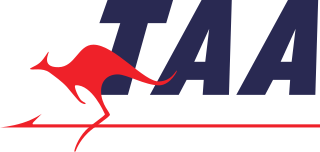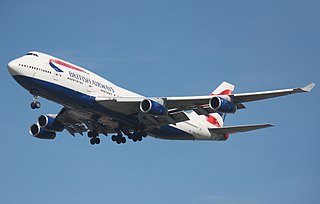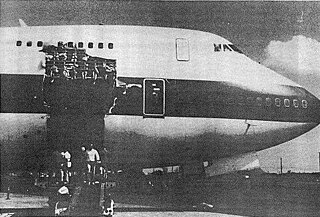Aircraft hijacking is the unlawful seizure of an aircraft by an individual or a group. Dating from the earliest of hijackings, most cases involve the pilot being forced to fly according to the hijacker's demands. However, in rare cases, the hijackers have flown the aircraft themselves and used them in suicide attacks – most notably in the September 11 attacks – and in several cases, planes have been hijacked by the official pilot or co-pilot; e.g., the Lubitz case.
After the September 11 attacks, there was an immediate call to action regarding the state of aviation security measures as the hijackers involved in 9/11 were able to successfully pass through security and take command of the plane. The existing security measures flagged more than half of the 19 hijackers in 9/11; however, they were cleared to board the plane because their bags were not found to contain any explosives. In the months and years following September 11, 2001, security at many airports worldwide were reformed to deter similar terrorist plots.
El Al Israel Airlines Ltd., trading as El Al, is the flag carrier of Israel. Since its inaugural flight from Geneva to Tel Aviv in September 1948, the airline has grown to serve over 50 destinations, operating scheduled domestic and international services and cargo flights within Israel, and to Europe, the Middle East, the Americas, Africa, and the Far East, from its main base in Ben Gurion Airport.

Trans Australia Airlines (TAA), renamed Australian Airlines in 1986, was one of the two major Australian domestic airlines between its inception in 1946 and its merger with Qantas in September 1992. As a result of the "COBRA" project, the entire airline was rebranded Qantas about a year later with tickets stating in small print "Australian Airlines Limited trading as Qantas Airways Limited" until the adoption of a single Air Operator Certificate a few years later. At that point, the entire airline was officially renamed "Qantas Airways Limited" continuing the name and livery of the parent company with the only change being the change of by-line from "The Spirit of Australia" to "The Australian Airline" under the window line with the existing "Qantas" title appearing above.

Rome–Fiumicino International Airport "Leonardo da Vinci" is an international airport in Fiumicino, Italy, serving Rome. It is the busiest airport in the country, the eleventh-busiest airport in Europe and the world's 49th-busiest airport with over 43.5 million passengers served. It covers an area of 16 square kilometres (6.2 sq mi).

Melbourne Airport, colloquially known as Tullamarine Airport, is the primary airport serving the city of Melbourne, and the second busiest airport in Australia. It opened in 1970 to replace the nearby Essendon Airport. Melbourne Airport is the main international airport of the four airports serving the Melbourne metropolitan area, the other international airport being Avalon Airport.

The Boeing 747-400 is a wide-body airliner produced by Boeing Commercial Airplanes, an advanced variant of the initial Boeing 747. The "Advanced Series 300" was announced at the September 1984 Farnborough Airshow, targeting a 10% cost reduction with more efficient engines and 1,000 nautical miles (1,900 km) of additional range. Northwest Airlines (NWA) became the first customer with an order for 10 aircraft on October 22, 1985. The first 747-400 was rolled out on January 26, 1988, and made its maiden flight on April 29, 1988. Type certification was received on January 9, 1989, and it entered service with NWA on February 9, 1989.

Pan Am Flight 73 was a Pan American World Airways flight from Bombay, India, to New York, United States, with scheduled stops in Karachi, Pakistan, and Frankfurt, West Germany. On September 5, 1986, four armed Palestinian men of the Abu Nidal Organization attempted to hijack the Boeing 747-121 serving the flight while it was on the ground at Karachi. The aircraft, with 360 passengers on board, had just arrived from Bombay. A grand jury later concluded that the militants were planning to use the hijacked airliner to pick up Palestinian prisoners in both Cyprus and Israel.

Avalon Airport is an international airport located in Avalon in the City of Greater Geelong in Victoria, Australia. While located outside the Melbourne metropolitan area, it is the second busiest of the four airports serving the state capital in passenger traffic. It is located 15 km (9 mi) north-east of the Geelong CBD and 50 kilometres (31 mi) south-west of the Melbourne CBD. The airport is operated by Avalon Airport Australia Pty Ltd, a subsidiary of Linfox.

Launceston Airport is a regional airport on the outskirts of Launceston, Tasmania. The airport is located in the industrial area of Western Junction 15 km (9.3 mi) from Launceston city centre. It is Tasmania's second busiest after Hobart Airport; it can also run as a curfew free airport.

United Airlines Flight 811 was a regularly scheduled airline flight from Los Angeles to Sydney, with intermediate stops at Honolulu and Auckland. On February 24, 1989, the Boeing 747-122 serving the flight experienced a cargo-door failure in flight shortly after leaving Honolulu. The resulting explosive decompression blew out several rows of seats, resulting in the deaths of nine passengers. The aircraft returned to Honolulu and landed with no further incident.
QantasLink is a regional brand of Australian airline Qantas and is an affiliate member of the Oneworld airline alliance. It is a major competitor to Regional Express Airlines and Virgin Australia Regional Airlines. As of September 2010 QantasLink provides 1,900 flights each week to 54 domestic locations.

The Boeing 747SP is a shortened version of the Boeing 747 wide-body airliner, designed for a longer range. Boeing needed a smaller aircraft to compete with the McDonnell Douglas DC-10 and Lockheed L-1011 TriStar tri-jet wide-bodies, introduced in 1971/1972. Pan Am requested a 747-100 derivative to fly between New York and the Middle East, a request also shared by Iran Air, and the first order came from Pan Am in 1973.

The Trans-Australian Airlines hijacking was Australia's first aircraft hijacking. It occurred on 19 July 1960 over Brisbane in a Trans Australia Airlines (TAA) Lockheed Electra.

Ethiopian Airlines Flight 708 was a Boeing 720-060B, due to operate an international scheduled Addis Ababa–Asmara–Athens–Rome–Paris passenger service, that experienced a hijacking attempt on 8 December 1972.

Tianjin Airlines Flight 7554 was a scheduled passenger flight between Hotan and Ürümqi in China's Xinjiang Autonomous Region. The aircraft operating this route on 29 June 2012, an Embraer 190, took off from Hotan at 12:25 pm; within ten minutes, six ethnic Uyghur men, one of whom allegedly professed his motivation as jihad, announced their intent to hijack the aircraft, according to multiple witnesses. In response, passengers and crew resisted and successfully restrained the hijackers, who were armed with aluminium crutches and explosives.












